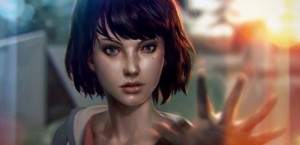Preview: Life is Strange
Remember Me? Remember that? Remember? The French studio Dontnod? Well, you should.
They’re back with a lovely third-person level-based, episodic adventure game set in small-town Arcadia Bay, Oregon. It follows the story of Max, who comes back to Arcadia Bay after five years to find that life as she’d left it wasn’t the same.
It’s a game that sticks in your mind because everyone, on some level, has experienced nostalgia and this game; coupled with a captivating and emotionally unobtrusive soundtrack, somehow unlocks those memories or experiences. You can relate. And it’s often you empathise or understand a character, but it’s very rare that you actually relate to a protagonist. And as a “coming of age story”, there is a sense of vulnerability that allows you to understand the weight of the consequences resulting from decisions you make and/or made at that age. Hindsight, nostalgia. It wants you to remember how you felt. These are the core mechanics of the game.

Max is a budding photographer and finds it easier to get on with her craft than rekindling old friendships. The exception is her best friend Chloe. Without going into too much detail, Chloe has fallen rebellious after the death of her father. Her new stepdad is “an asshole”. This bonding happens in Chloe’s room and in this room we get a chance to explore some of the freedom we have to explore the room.
Michel Koch, the game and art director, said that the “level-based” rooms in which the story and game take place were similar to levels you could find in games such as Heavy Rain.
“It’s the kind of levels you can find in a game like Heavy Rain” and that there “are a lot of different environments, some smaller, some larger” for players to explore. And everything in Chloe’s room was interactable. But it’s about the choices you make when you’re in exploration mode. Depending on your standing with the person or people you’re with, your actions are more important than you think. For example, Chloe asked Max to put on a CD. You could choose to ignore it, but by doing so you may change the arc of the story.
“Every time there is a lot of interactions to look at and to get the story of the characters; the story of the city and this kind of interesting stuff.”
“Some of your actions will have real big repercussions and others will be much more intimate on the level of what Max is feeling, what the characters are saying to Max and we have those kind of consequences.”

The ability to rewind time, therefore, allows you to explore with more confidence that you’re not going to miss any of the story. You can’t rewind every decision you’ve made, but you can rewind every decision made in the level your in; effectively in between checkpoints. But Koch insists that wants “the player to act by himself”, even though you’ll get visual cues when you can rewind.
But the rewind capability might also have dire consequences in the greater story arc.
“This rewind ability; there will be an explanation and there is a story around it, but we are really using it as a way to ask questions to the player [like] what really is important when you make a choice, and do you really need to change every choice? Because you can,…maybe you need to accept fate and grow up as an adult.
“And even if you try everything to get the best result with your choice, there will be some consequences later that you won’t be able to change.”
And this harks back to the coming of age theme running through this game.
Koch also likened the story progression to the Telltale formula, however said character relationships also impact the story.
“You are branching and sometimes it comes back to the main story, but we are working on real differences between character behaviour and what they’re saying. Even when you’re in the same branch, the dialogue might be different, what the character will say will be different, based on your progress choice. Some of your actions will have real big repercussions and others will be much more intimate on the level of what Max is feeling, what the characters are saying to Max and we have those kind of consequences.”
The game is also very visually pleasing. It’s set in the golden-lit autumnal season months and Koch said that the art style was “impressionistic rendering of a realistic rendering”, a style he hoped would capture the essence of nostalgia. It has a sepia feel to it, yet it’s delicately lit and wonderfully colourful.

“We are dealing with a coming of age story, so we thought autumn was a good spot to show this.”
That and you get to take some great snaps with Max’s camera. Make memories and get to know your protagonist better.
But there is still the question of whether you will continue to relate with the character if the game is episodic. Koch promises they’ll be released in quick succession.
The game is beautifully crafted, well designed and obviously lovingly created. It’s nostalgic and the unobtrusive soundtrack I mentioned earlier deserves more than just a mention at the beginning of this preview and a line here, but I can’t say more about it. Much like I can’t say more about the graphics or the lighting. Much like I can’t say about the emotions I personally felt that stirred in me. It’s a combination of parts, a recipe which will demand different parts of you to complete it. It’s a personal experience which is all I can say. Some will not have the patience and may find it tedious, but others won’t. Much like Remember Me it ticks the boxes.
The question isn’t really whether it ticks the boxes though. It’s whether it ticks your boxes.







